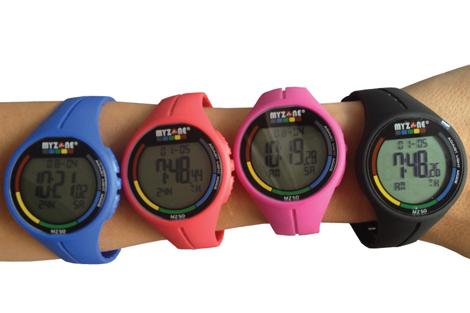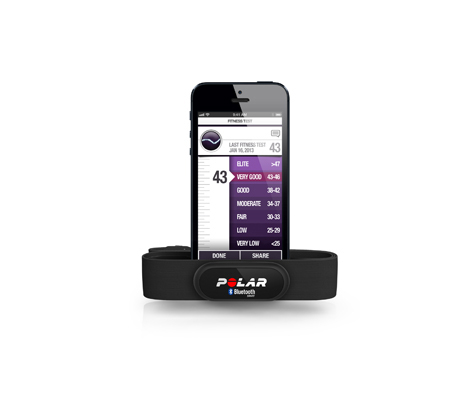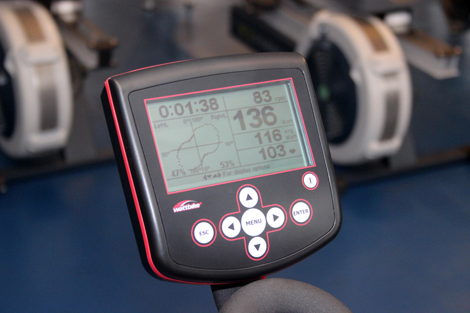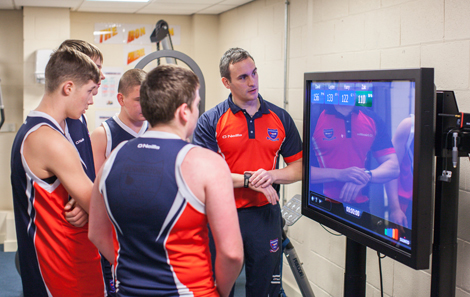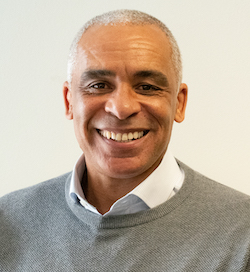Heart rate monitors can boost motivation in three main ways: measuring progress, training optimally and recording achievements. So says Julia Dalgleish, master trainer at Cybex, adding: “Clarity of goal and the ability to view training progress increases intrinsic motivation, helping us to stay on track to reach our goals. Motivation comes from setting goals and seeing progression towards them, and heart rate monitors present this progression.”
Historically, heart rate monitors were highly complicated, reporting on the likes of lactate inflection point and anaerobic threshold. However, manufacturers have worked hard to make them more user-friendly, using parameters such as percentages or colour zones to help people understand what they should be aiming for. And now that apps are also becoming available, heart rate monitoring is heading for the mainstream. So how can operators make the most of the motivation potential it offers?
Rewarding effort
“MYZONE has changed the game on heart rate monitors by focusing on effort rather than fitness,” says CEO Dave Wright. “MYZONE Effort Points (MEPs) are accredited to minutes spent in specific effort zones, so the system offers an inclusive approach for people of all ages, shapes, sizes and levels of fitness: an unfit person can earn as many points as a fit person, provided they put in the effort.”
“I like the way MYZONE creates a level playing field for members,” agrees Sol Gilbert, MD of ZT Group. “We run regular MEP challenges, with the last challenge being won by one of our more unfit members. That gave them a tremendous boost.”
Wright continues: “Although not specifically heart rate-related, MYZONE also motivates users in a couple of other ways. Firstly, it helps to change behaviour by making people accountable for their actions. It wirelessly uploads fitness data, so there’s nowhere to hide if they’ve skimped on their programme – they know their gym can keep tabs on them. There’s also an iPhone app that tracks food consumed: users photograph their meals, with the photos then date-stamped and recorded in their online account. Although people can cheat, it still inspires accountability: if people really want to achieve their goals, they need to be honest with themselves.
“Another motivating aspect is showing users how their body is changing through exercise. The iPhone app provides the consumer with the ability to store ‘before and after’ photos, which can be compared to see results.
“MYZONE also integrates with body fat scales such as Inbody and Intelemetrix, allowing information such as body fat, muscle mass and visceral fat to be automatically uploaded into MYZONE users’ accounts. This also helps people track outcomes over time and keep tabs on how their body is changing.”
All about apps
“We’re seeing a move away from traditional heart rate monitors towards apps. People can be scared of science, but they’re not scared of apps,” says Liz Shenton of Polar Electro UK. “In response to this, we launched the Polar Beat app in September last year, which works with iPhone 4S and iPhone 5 and will soon work with Android. It links with our heart rate monitor belt and uses bluetooth technology.
“The app is designed to help users understand their workout and get the most effective results. Users can choose a training target – calorie burn, for example, or a time or distance record to beat – and choose the type of exercise. Real-time graphs and voice guidance are used to keep the user at the right intensity. GPS tracks the distance, the pace and the route.
“The workout is analysed at the end, so the user finds out how many calories they have burned – many users are motivated by calories. They also receive a summary of how the workout benefited them and can then share the results on Facebook and Twitter.” This in itself can add to people’s motivation levels, as they want to impress their friends with their workout efforts.
Jon Johnston, MD of Matrix Fitness, agrees: “Over the last couple of years, there have been major improvements in software and web portals, allowing people to download their information and analyse it afterwards in order to track their progress.
“Smartphone apps are changing the way heart rate is sensed and is the next big growth area. Smartphones can be very easily converted to a heart rate monitor using just a dongle and an app.
“Although it’s currently used mainly by elite athletes, Training-Peaks is a good example of this and demonstrates the future direction of heart rate monitoring and data interpretation. It can be used with Garmin, Polar and Suunto watches, as well as many other devices such as cycling power meters and GPS. As well as setting a programme and capturing the heart rate, the app records other useful data such as resting heart rate, body weight, and whether the body is getting fatigued. These ideas are already starting to be incorporated into more consumer-orientated programmes.”
Knowledge is power
“What consumers want is changing rapidly, and the scientific data Wattbike provides is the product’s main motivating factor,” says sales manager Richard Baker. “Consumers are more tech-savvy and demanding, with a thirst for knowledge when it comes to training more efficiently and effectively. Members are seeking to understand the science behind their training and how they can use the data.”
He continues: “Our onboard computer displays a wide range of fitness parameters – such as heart rate and power – in real time. That enables users to fine-tune their training and track improvements, both during the workout and over a longer period of time. Tracking fitness parameters shows the user their workouts are having the desired effect. That’s fantastic motivation for them, and a strong retention tool for the gym.
“We’re continually working to help our customers analyse the performance data from their workouts, and we currently have some very exciting development plans to enhance the offering for both members and operators.”
Importance of education
“The most important factor in the use of heart rate monitoring as a motivational tool for exercise is education – for example, educating users about aerobic thresholds and how this can benefit them with their training,” says Jason Kerry, senior sales executive at Suunto.
“Health club users often remain in a comfort zone when it comes to the intensity of their workouts, so features incorporated within modern heart rate monitors – such as an inbuilt training coach and increasingly accurate data collection and calculation – can play a significant role in getting results and motivating the user. Meanwhile, a new feature of Suunto watches is recovery time generation and display, which estimates how long it will take to recover and prevents people from over-training – a common cause of demotivation.”
But it’s not only experienced exercisers who can derive motivation from understanding heart rate training. Precor and Suunto – both owned by Amer Sport – have recently collaborated to provide Wennington College in Lancashire, UK, with heart rate monitors and wristwatches. All the boys at the school are statemented with social, emotional or behavioural difficulties, and one of the aims of the school is to bring the boys back into the mainstream. Sport and exercise is one of the ways in which they aim to achieve this.
“As it’s a boys-only school there’s a lot of testosterone, but sport and exercise helps channel this and burns off excess energy and aggression,” says Precor’s Paul Bolus. “The heart rate monitors have helped because they’ve given the boys goals to aim for. Many come from disadvantaged backgrounds and have no idea about healthy lifestyles, but the monitors – alongside education from PE teachers – are helping them understand their bodies, health and exercise.”
Immediacy & accountability
“Our concept and studio focus on the idea of working out based on science, and using heart rate monitors fits with this,” says David Long, CEO of Orangetheory Fitness in the US. “We introduced Polar Cardio GX about two and a half years ago and saw our member retention improve by about 15 to 20 per cent.
“Members have the instant gratification of seeing their data at the end of the session. A summary draft of how much time they spent in each zone, and calories burned, is emailed to them at the end of their workout. That’s very motivating because they can easily track progress: the data is objective, simple to understand, and clearly shows the impact their workout is having.”
ZT Group’s Gilbert agrees: “In the 18 months that we’ve been using MYZONE, both retention and motivation have improved massively. I can check up on our members – there’s no hiding place – which keeps them accountable. And that helps change behaviour.”









